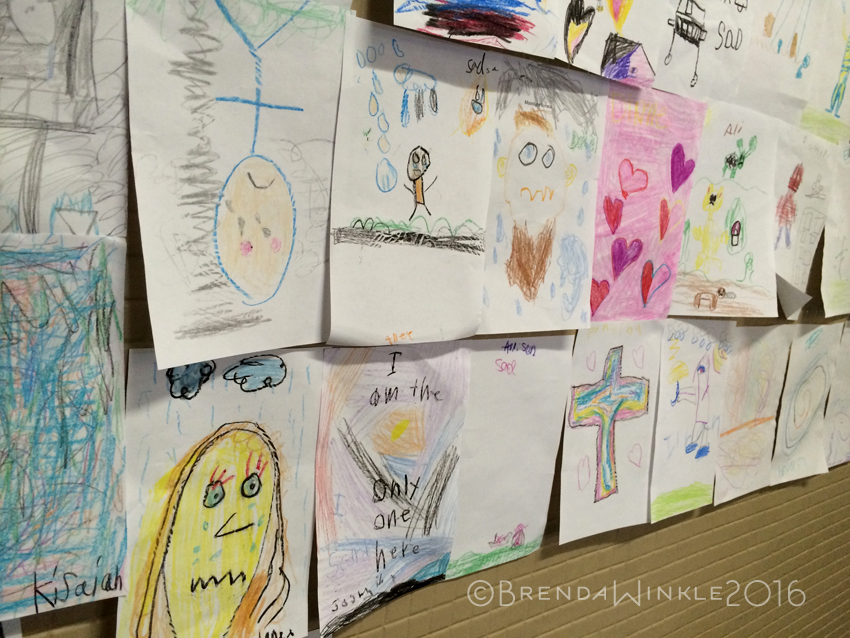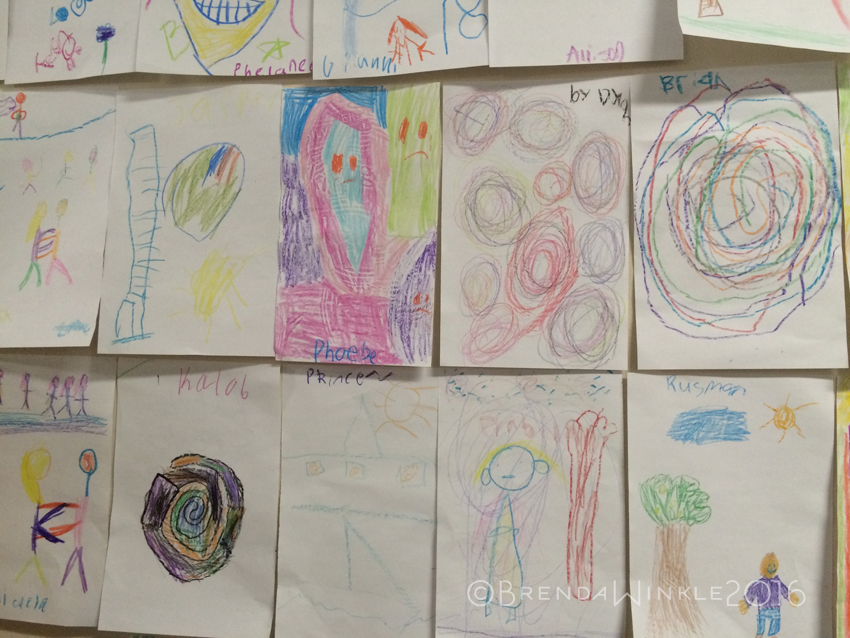Can Beethoven make us (or our kids) naughty?? Boise Spiritual Teacher
Apr 03, 2016
When you watch children, you can learn so much. You can learn about them and their world as well as learning something about ourselves.
You may know that in addition to writing, reiki healing and intuitive readings, I am also a public school music teacher. I’ve been teaching music for the past 19 years and I’m still learning from my students.
This past week, my lesson focus was on integrating music and the other arts. When I planned this lesson, I never dreamed it would end up in a blog post here. But something unexpected happened that I wanted to share.
I had primary students in first and second grade connect music to the visual arts. Students were to determine what emotions the composer was trying to convey in a particular song and then create a visual art piece with crayons and paper that reflected the emotions in the song. We also compare periods of music history in this project. This is a lesson I’ve done lots of times, but this time – like every time, I chose new music. In this case, I wanted to choose music that was vastly different in style and mood but that was all piano music so that the actual music the kids heard was the only variant. I’ll put some of the art examples at the bottom of this post.
The two songs I played were The Maple Leaf Rag by Scott Joplin and the first section of Ludwig von Beethoven’s Moonlight Sonata. I’ll put links to the iTunes versions of these songs at the bottom of this post in case you’d like to hear them.
Now, at the risk of creating a spoiler… I decided that I wanted students to do the first part of the project using Maple Leaf Rag because it is energetic, happy, in a major key, and overall pleasant. I wanted to hook the students into the lesson with something I knew they would love.
The Moonlight Sonata is breathtakingly beautiful. It’s poignant; displays a huge range of notes and dynamics; it is expressive and some might say, it is melancholy. There are areas of tension and release so eloquently written that its impossible not to be carried away by an upsurge of emotion in the Moonlight Sonata. It’s one of my favorite pieces to play. That’s one reason I wanted to share this recorded version with my students. I anticipated some students would cue into the melancholy areas and thought that others might be soothed by beautiful phrases.
On the first two days of this project, I played the Maple Leaf Rag for four classes while they created art that would show the emotions conjured by the piece. Students loved the music and created a lot of lighthearted art. Colors were light or vibrant, drawings were clear and crisp and the overall mood of the art was happy. The students loved the lesson!! Many, many students side-hugged me on their way out of the classroom because they’d enjoyed music class so much. That’s the barometer for a successful first or second grade lesson…smiles and side-hugs.
The third and fourth days of the project, students listened to the Moonlight Sonata. The project went very well. I could see a striking difference in the art they were producing. Colors were more muted or darker, drawings were slightly less crisp (this could also be due to the fact we looked at art created in the Romantic Period before the project began), and the emotions shown in their drawings included anger, melancholy, calm, and even grief. All this was to be expected and, from an educational standpoint, I was pleased with the outcome of the lesson. Students clearly understood that both music and visual art contain emotion and demonstrated that understanding through their art. Well, except for the little girl who decided to “draw hearts for both songs because she loves hearts and hearts show love and love is a feeling so hearts are good for both songs”. There’s always one, right?
The unexpected portion of the lesson was in the student behavior. The first two days I kept thinking how incredibly well behaved the students were. They were polite, engaged, responsive, responsible, and attentive. Student behavior on days three and four (Moonlight Sonata) was HORRIBLE. Students were engaged… but for many, their good behavior ended there.
Some students were arguing with each other. Some students were restless and agitated. They were doing things they don’t normally do (and aren’t allowed to do!) like jumping off the risers, throwing crayons into the box, or rolling on the floor. What was more surprising is that the students who were doing this type of thing aren’t kids who usually act like that. As I looked at their art, I kept thinking I was missing something. The students did a great job on their projects. So that wasn’t the disconnect. I kept trying to find what what was causing the behavior.
I took careful notice of which students were the most agitated and which students seemed to be the most normal. As I observed the students, a lightbulb went off! Some students were able to sit with the emotions the Beethoven piece pulled up for them (they were behaving normally) while other students were doing everything they could do to avoid feeling the emotions the music was creating inside them.
While I was watching the students, I was reminded how much their behavior parallels our own adult behavior when we don’t want to feel something. I feel confident you understand what I’m talking about.
Having to go solo to an event with lots of couple? Pass the chips, please!
Nervous about meeting new people at the party? Why, yes…make it a double.
Worried the project won’t be up to par? Hmmm…just one more Netflix episode won’t be *that* big of deal. Plus if I don’t put all that much time into it then I can know it was my effort and not the content that tanked.
Upset over an event at work? Why not yell at the kids? Not that that will help, but…unfortunately we have probably done that at least once.
Can you relate? I certainly have gone to great lengths to avoid feeling emotions. And the funny thing is, sometimes we avoid positive emotions as much as the negative ones. We worry that this beautiful moment will be over too soon. Or when we watch our baby sleeping peacefully we grow fearful about that baby’s health. When we feel those first stirrings of romantic interest excitement in a new partner turns to fear of another breakup.
It’s only when we allow ourselves to feel our emotions that we can come to any sort of peace. Feeling our emotions is the only thing that allows us to be in the moment. Feeling our feelings is also the only way we have to heal from past hurts.
Ever been to a yin yoga class? I regularly practice yin yoga in addition to the other forms of yoga in my weekly practice. Yin is a form of yoga where each pose is held for a long time. By “long time” I mean in some cases we hold poses for 7-10 minutes. The poses are supported with various props in order to relax into them. It’s a very achievable form of yoga for anyone. Not all the poses are comfortable. In fact, sometimes, we have to breathe through a momentary discomfort that comes from putting a form of acupressure somewhere or a stretch somewhere else. It’s finite. The pose will eventually end. So I know that even when there is a cork block applying accupressure underneath my side ribcage to releasing a muscle in my shoulder (and it’s not comfortable!) that its finite and that when the pose is released, the tension that had been present in my shoulder will disappear. That’s what makes it worth resting into the sensations and focusing on my yogic breathing.
The same is true with our emotions. They are finite. Emotions float like butterflies through our being. They won’t last forever, even the tough ones. By allowing them to exist and experiencing them, they dissipate. By ignoring them, negative emotions begin to grow while positive emotions fade. We end up doing our adult version of rolling on the floor and throwing crayons.
So can Beethoven make us or our kids naughty? Of course not. 🙂 Well, maybe, if we are trying to avoid feeling uncomfortable feelings. The next time you feel a strong emotion whether it’s positive or negative, sit with it for just a few moments. Don’t do anything. Just sit with it.
As soon as you do, you’ll notice that once the emotion is acknowledged, you can feel AND think. Take some deep breaths and notice that you are still ok. And you are feeling. That we can feel is such a beautiful part of being human. Give yourself permission to feel whatever it is that you are feeling.
My mission is to spread love, light and healing far and wide. If you know someone who you think would enjoy blogs or Thursday tips, please feel free to share in any way you choose! Forward an email, share on social media or tell your friends. Please help me share!
I’ll be giving a free talk on changing belief systems and connecting with more self-love on Wednesday, April 6 at 6 pm at my office. If you would like more information, please message me or find my event on Facebook at Facebook.com/brendawinkle.inspiration.coach.
AND ALL subscribers (THAT COULD BE YOU!!) are going to receive a brand new FREE meditation on April 30 right in your inbox. Know someone who would enjoy a meditation? Invite them to subscribe! Note: this meditation will not be shared on social media and is only for subscribers. It’s a special thank you for subscribing!
All my love! I’ll be back on Thursday with Thursday’s Tip.
Oh… and the kid art… isn’t kid art great! Be gentle with judgement, I’m not a visual art teacher.
Moonlight Sonata on iTunes Here.
Maple Leaf Rag on iTunes Here.


